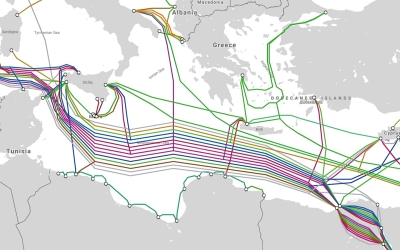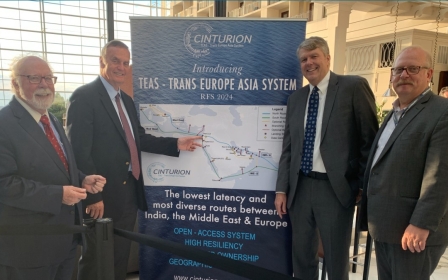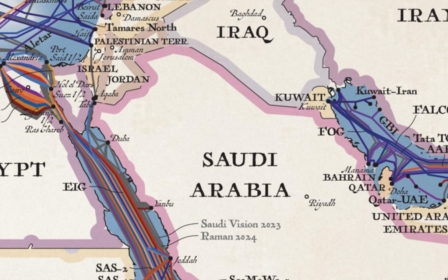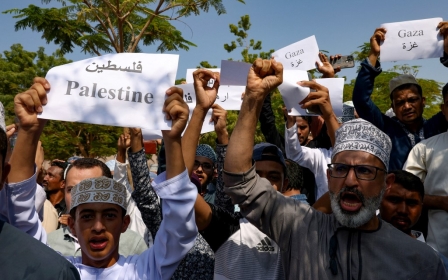Rubymar sinking: Did Houthi ship attack sever Red Sea internet cables?
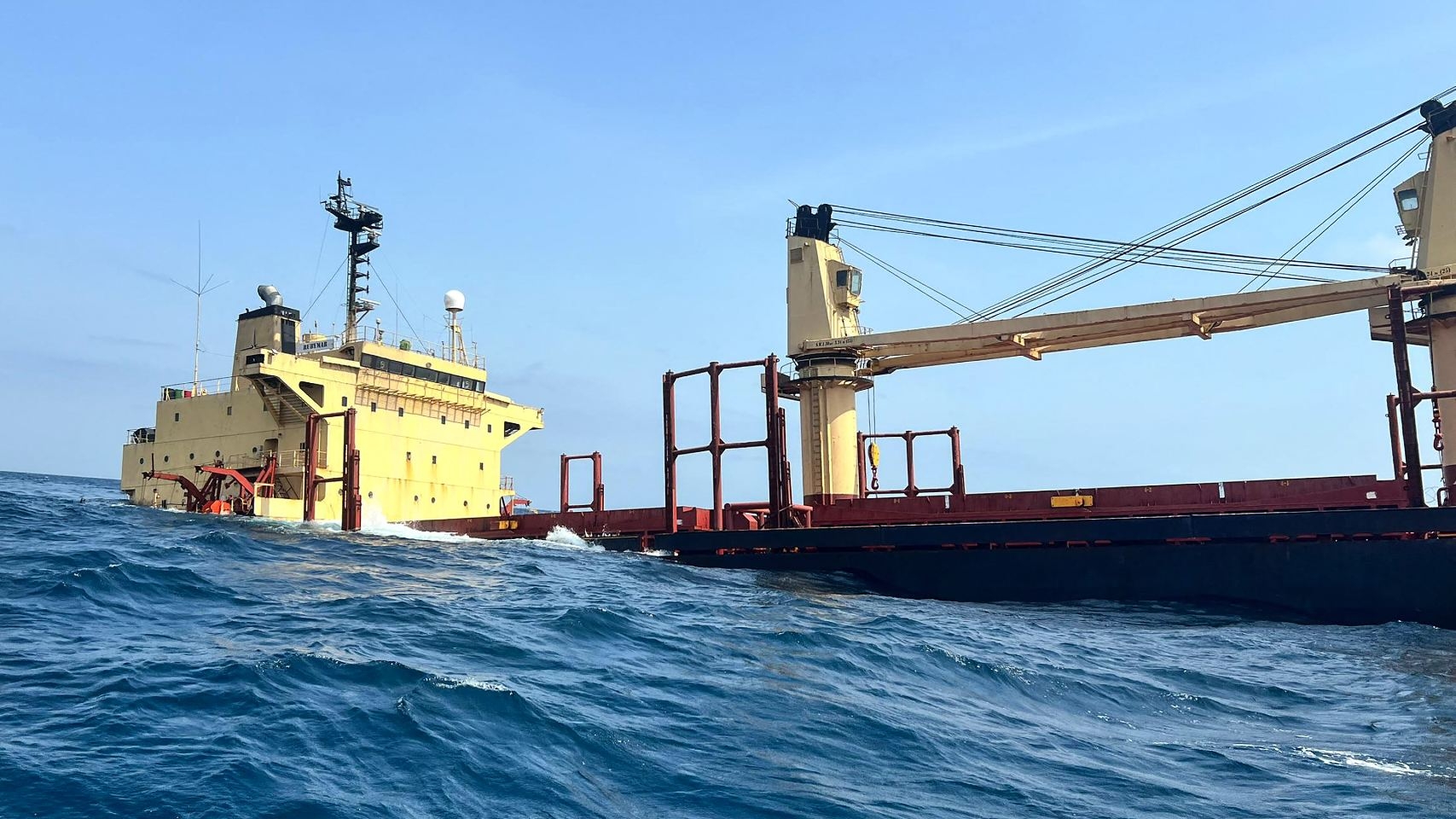
Following the Houthi attack on British-owned vessel Rubymar off the coast of Yemen, three internet cables were cut. It has caused the submarine cable industry to scramble to re-route internet traffic, with over 90 percent of all Europe-Asia capacity running through the Red Sea.
Fifteen cables run through the Red Sea making it highly strategic, as well as vulnerable to disruption. It is not yet clear what caused the damage to the three cables - EIG, Seacom, AAE-1 - which carried an estimated 25 percent of Red Sea traffic.
“I don’t think anyone commenting on this really knows the cause of the outage, and I want to reiterate that a direct attack on the cables is unlikely. Accidental damage is far more plausible,” said Paul Brodsky, senior analyst at telecommunications research firm TeleGeography in Washington.
"There's nothing to panic about at this point, but there is concern as the Red Sea is such an important cables location."
There is speculation that the anchor of the Rubymar, which was hit by a missile on 18 February, damaged the cables as it drifted northwards before sinking on 2 March.
Stay informed with MEE's newsletters
Sign up to get the latest alerts, insights and analysis, starting with Turkey Unpacked
Israeli media outlet Globes has claimed the Houthis are responsible. The Houthis have been attacking vessels in response to the Israeli war on Gaza, but have denied responsibility for cutting the cables, blaming the British and US navies operating in the Red Sea.
“It's tough to say whether it's a deliberate attack on the cables or due to the Rubymar’s anchor. Either way it doesn't bode well for submarine cable connectivity in the region, showing how tightly concentrated cables are in the Red Sea corridor, and that there's nothing you can really do to manage the risk,” said Michael Ruddy, director of international research at US-based Terabit Consulting.
“Huge amounts of [internet] traffic and money have been put into these cables. It is a blow not only to existing infrastructure but also the development of future systems.”
Julian Rawle, a US-based submarine fibre-optic cable consultant, also identified anchor damage as a probable cause, despite the cables being deliberately spaced apart to prevent such accidents from occurring.
“A ship can travel a number of [nautical] miles dragging its anchor, which seems the most plausible explanation. Attacking cables under the water is a fool's game, and nobody really has the capability to cut cables,” said Rawle.
“There's talk of secret submarine vessels that the US and Russia may have, but even if you could go down and cut a cable, you would have to find it first, and cables are often buried. I really don't think this was any kind of sabotage.”
When cables are damaged, operators typically collect GPS signals of nearby ships to work out which vessel may be responsible.
“It's not clear if this can be done for the Rubymar, or whether the findings will be accepted [by multiple parties],” said Ruddy.
Risky repairs
The three damaged cables all connect European countries to Asia. EIG - the Europe India Gateway - runs from the UK to Mumbai, while Seacom runs from France through the Red Sea before branching off to India and South Africa. AAE-1 links France, Italy and Greece with India, Southeast Asia and Hong Kong.
While internet data has been rerouted to other cables, which have capacity to handle the additional traffic, the damaged cables are not expected to be repaired anytime soon. Repair vessels will need to sail to the area, which will take time, but the bigger issue is getting permission to do so in Yemen's territorial waters.
“You can't just lay or repair a cable in someone's territorial waters. Companies are used to getting permission, but when a country is in a civil war and a group sets themselves up as a government it gets really tricky. And are western companies authorised to do so from the Houthis?” said Brodsky.
The Houthis, officially known as Ansar Allah, have been designated as a terrorist organisation by the US in response to their attacks on shipping, while the UK has also imposed sanctions on Houthi officials, which could impact companies' ability to carry out commercial and bureaucratic deals.
A further issue is the cost of insuring repair vessels. “It has become very expensive to insure ships going through the Red Sea, and you also need to man ships, which may be hard while missiles are flying,” said Brodsky.
Earlier this year the cost of insuring cable repair ships near Yemen reached $150,000 a day, according to the Wall Street Journal.
The progress of two new cables, Google's Raman and Meta's 2Africa, through the Red Sea is also expected to be impacted by regional instability.
“Even if the whole situation calms down, insurance companies are going to say, whoa, we're not sure about insuring through the Red Sea as this could happen again. It is going to make cable maintenance operationally very difficult and much more expensive,” said Rawle.
Long-term issues
The Red Sea has long been considered a major choke point in the cable industry. In the north, Egypt has been able to monetarily exploit its strategic importance as cables have to pass through its territory from the Red Sea to the Mediterranean Sea, while in the south the Bab el-Mandeb strait between Yemen and Africa is just 32-kilometres wide.
'Companies trying to negotiate deals to connect Saudi Arabia to Israel right now probably want to keep their head down'
- Julian Rawle, fibre optic calble consultant
“In Egypt the issue is the terrestrial crossing, with cable companies having to pay rent to TE (Telecom Egypt), and in the south it is physical but also political risk. The cable industry has not been able to come up with an alternative solution to the more than 95 percent of Europe-Asia traffic that passes through the Red Sea,” said Ruddy.
Over the past four years, two new cable projects have been announced that intend to bypass the Red Sea – Google's $400m Blue Raman cable and Cinturion's Trans Europe Asia System (TEAS).
Both projects intend to run through the Mediterranean to land in Israel, then cross overland to Jordan and Saudi Arabia. Riyadh is also trying to be a new fibre-optic cable contender in the region.
“The crisis is giving impetus to projects that use terrestrial routes through the Middle East and making them more viable. You could also see that impetus to develop terrestrial routes across sub-Saharan Africa or Central Asia to avoid the Red Sea,” said Rawle.
The Google and TEAS projects however appear dependent on Riyadh normalising relations with Israel.
“Clearly, the situation in Gaza is making the situation difficult for everybody. Companies trying to negotiate deals to connect Saudi Arabia to Israel right now probably want to keep their head down,” said Rawle.
Middle East Eye delivers independent and unrivalled coverage and analysis of the Middle East, North Africa and beyond. To learn more about republishing this content and the associated fees, please fill out this form. More about MEE can be found here.


